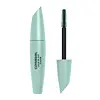What's inside
What's inside
 Key Ingredients
Key Ingredients

 Benefits
Benefits

 Concerns
Concerns

 Ingredients Side-by-side
Ingredients Side-by-side

Water
Skin ConditioningGlyceryl Stearate
EmollientAcrylates Copolymer
Disteardimonium Hectorite
StabilisingStearic Acid
CleansingCopernicia Cerifera Cera
EmollientTriethanolamine
BufferingLecithin
EmollientPropylene Carbonate
SolventSynthetic Wax
AbrasiveEthylhexylglycerin
Skin ConditioningOleic Acid
EmollientAlcohol Denat.
AntimicrobialPhenoxyethanol
PreservativeBenzyl Alcohol
PerfumingGlycerin
HumectantPropylene Glycol
HumectantPolyethylene
AbrasiveAscorbyl Palmitate
AntioxidantPanthenol
Skin ConditioningTocopherol
AntioxidantSimethicone
EmollientGlycine Soja Oil
EmollientTrisodium EDTA
Xanthan Gum
EmulsifyingTocopheryl Acetate
AntioxidantArgania Spinosa Kernel Oil
EmollientSclerocarya Birrea Seed Oil
HumectantWater, Glyceryl Stearate, Acrylates Copolymer, Disteardimonium Hectorite, Stearic Acid, Copernicia Cerifera Cera, Triethanolamine, Lecithin, Propylene Carbonate, Synthetic Wax, Ethylhexylglycerin, Oleic Acid, Alcohol Denat., Phenoxyethanol, Benzyl Alcohol, Glycerin, Propylene Glycol, Polyethylene, Ascorbyl Palmitate, Panthenol, Tocopherol, Simethicone, Glycine Soja Oil, Trisodium EDTA, Xanthan Gum, Tocopheryl Acetate, Argania Spinosa Kernel Oil, Sclerocarya Birrea Seed Oil
Water
Skin ConditioningBeeswax
Emulsion StabilisingJojoba Esters
EmollientCopernicia Cerifera Wax
Glycerin
HumectantStearic Acid
CleansingPalmitic Acid
EmollientStearyl Stearate
EmollientStearyl Palmitate
EmulsifyingAminomethyl Propanediol
BufferingAcacia Senegal Gum
MaskingCetyl Palmitate
EmollientParaffin
PerfumingCetyl Stearate
EmollientCaprylyl Glycol
EmollientHydroxyethylcellulose
Emulsion StabilisingPhenoxyethanol
PreservativeBehenic Acid
CleansingMicrocrystalline Wax
Emulsion StabilisingDisodium Phosphate
BufferingPolysorbate 60
EmulsifyingTocopherol
AntioxidantSodium Phosphate
BufferingCI 77499
Cosmetic ColorantWater, Beeswax, Jojoba Esters, Copernicia Cerifera Wax, Glycerin, Stearic Acid, Palmitic Acid, Stearyl Stearate, Stearyl Palmitate, Aminomethyl Propanediol, Acacia Senegal Gum, Cetyl Palmitate, Paraffin, Cetyl Stearate, Caprylyl Glycol, Hydroxyethylcellulose, Phenoxyethanol, Behenic Acid, Microcrystalline Wax, Disodium Phosphate, Polysorbate 60, Tocopherol, Sodium Phosphate, CI 77499
 Reviews
Reviews

Ingredients Explained
These ingredients are found in both products.
Ingredients higher up in an ingredient list are typically present in a larger amount.
Glycerin is already naturally found in your skin. It helps moisturize and protect your skin.
A study from 2016 found glycerin to be more effective as a humectant than AHAs and hyaluronic acid.
As a humectant, it helps the skin stay hydrated by pulling moisture to your skin. The low molecular weight of glycerin allows it to pull moisture into the deeper layers of your skin.
Hydrated skin improves your skin barrier; Your skin barrier helps protect against irritants and bacteria.
Glycerin has also been found to have antimicrobial and antiviral properties. Due to these properties, glycerin is often used in wound and burn treatments.
In cosmetics, glycerin is usually derived from plants such as soybean or palm. However, it can also be sourced from animals, such as tallow or animal fat.
This ingredient is organic, colorless, odorless, and non-toxic.
Glycerin is the name for this ingredient in American English. British English uses Glycerol/Glycerine.
Learn more about GlycerinPhenoxyethanol is a preservative that has germicide, antimicrobial, and aromatic properties. Studies show that phenoxyethanol can prevent microbial growth. By itself, it has a scent that is similar to that of a rose.
It's often used in formulations along with Caprylyl Glycol to preserve the shelf life of products.
Stearic Acid is a fatty acid. It is an emollient, emulsifier, and texture enhancer.
As an emollient, stearic acid helps soften skin. It aids the skin's protective barrier by preventing water loss. It also provides a gentle cleansing effect without stripping away natural oils.
Stearic acid may also be used to enhance the texture of products. It can add volume and stabilize ingredients such as water and oil. This can help water and oil ingredients from separating.
Sources of stearic acid include animal or vegetable fats/oils such as coconut or shea. It can be naturally found in butter, cocoa butter, shea butter, vegetable fats, and animal tallow.
This ingredient may not be Malassezia folliculitis, or fungal-acne safe.
Learn more about Stearic AcidTocopherol (also known as Vitamin E) is a common antioxidant used to help protect the skin from free-radicals and strengthen the skin barrier. It's also fat soluble - this means our skin is great at absorbing it.
Vitamin E also helps keep your natural skin lipids healthy. Your lipid skin barrier naturally consists of lipids, ceramides, and fatty acids. Vitamin E offers extra protection for your skin’s lipid barrier, keeping your skin healthy and nourished.
Another benefit is a bit of UV protection. Vitamin E helps reduce the damage caused by UVB rays. (It should not replace your sunscreen). Combining it with Vitamin C can decrease sunburned cells and hyperpigmentation after UV exposure.
You might have noticed Vitamin E + C often paired together. This is because it is great at stabilizing Vitamin C. Using the two together helps increase the effectiveness of both ingredients.
There are often claims that Vitamin E can reduce/prevent scarring, but these claims haven't been confirmed by scientific research.
Learn more about TocopherolWater. It's the most common cosmetic ingredient of all. You'll usually see it at the top of ingredient lists, meaning that it makes up the largest part of the product.
So why is it so popular? Water most often acts as a solvent - this means that it helps dissolve other ingredients into the formulation.
You'll also recognize water as that liquid we all need to stay alive. If you see this, drink a glass of water. Stay hydrated!
Learn more about Water